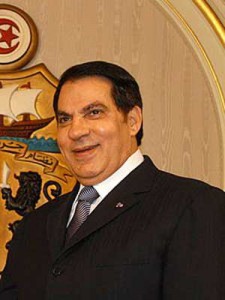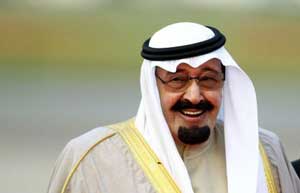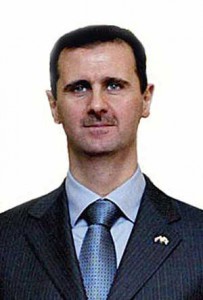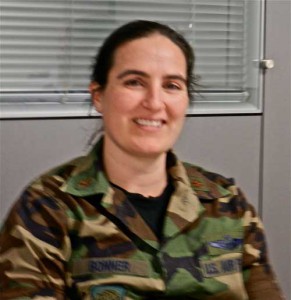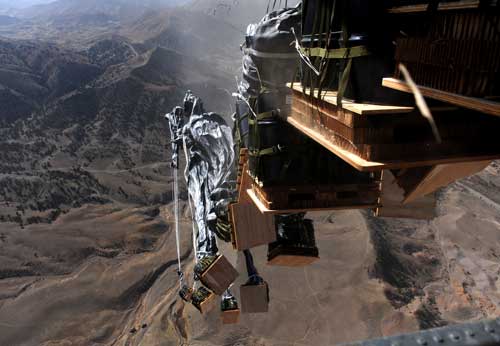By Richard Weitz
06/12/2011 – The role of nuclear weapons in NATO’s defense and deterrence policies is clearly declining. The alliance’s Strategic Concept adopted last November clearly states that NATO will retain nuclear weapons as long as they exist, and that NATO wants its nuclear deterrent to be credible and effective.
But the thrust of the new document, as well as NATO statements and discussions since then, is to see how missile defenses, conventional forces, and arms control can reduce the alliance’s reliance on nuclear weapons. The current focus on meeting current and emerging threats contributes to this trend since many of these challenges—cyber threats, maritime piracy, etc.—are not addressed well by nuclear options.
NATO’s collective defense policy has always preserved the option of employing nuclear weapons, including using them first for purposes of deterrence, defense, and retaliation. Although Britain, France, and the United States are the only NATO members that have their own nuclear forces, long-standing NATO policy allows other members to host U.S.-made nuclear weapons in peacetime and, during war, employ them using their own nuclear delivery systems (currently specially equipped combat aircraft that are capable of delivering nuclear as well as conventional weapons). In peacetime, American soldiers stationed at their storage sites—specially constructed vaults on certain airfields—keep them under their control while host-nation pilots train with dummy warheads. In wartime, the American president can authorize their release, as well as the codes for detonating them, to the host-nation’s military command. In turn, the NATO nations hosting U.S. nuclear weapons equip and train their air forces to deliver them.
The U.S. government refuses as a matter of policy to confirm or deny the location of its nuclear weapons, but analysts consistently report that the number of NATO countries hosting U.S. nuclear weapons, as well as their total number, has decreased considerably since their Cold War highs. Whereas the United States had thousands of various types of nuclear weapons stationed in Europe during the Cold War, the total TNWs under NATO’s nuclear-sharing agreement is now estimated at less than 200 B-61 nuclear gravity bombs stored in 87 specially designed aircraft shelters at six bases in five NATO countries: Belgium, Germany, Italy, the Netherlands, and Turkey.
Until last year, the Global Nuclear Zero movement and the commitment of newly elected U.S. President Barack Obama to eliminate all nuclear weapons eventually encouraged opponents of the U.S. nuclear weapons in Europe to call for their rapid removal.
At the same time, many of the governments of the newest NATO members called for their retention to balance Russia’s larger TNW stockpile. In early 2010, the Obama administration ended this debate by decisively calling for continuing NATO’s nuclear sharing policy for the time being. The April 2010 U.S. Nuclear Posture Review (NPR), while acknowledging that NATO’s nuclear weapons policies were a collective alliance decision, nevertheless argued that “the presence of U.S. nuclear weapons … contribute to Alliance cohesion and provide reassurance to allies and partners who feel exposed to regional threats.” The NPR called for including TNW in any future Russia-U.S. Arms control agreements. The November 2010 NATO summit endorsed this position.
Perhaps the most important factor keeping NATO in the nuclear business is concerns about Russia. No one anticipates engaging in a nuclear war with Russia anytime soon, but NATO policy makers are reluctant to eliminate their dwindling supply of shared nuclear weapons until Russia agrees to reduce the imbalance in so-called non-strategic or tactical nuclear weapons (TNW) between NATO and Russia.
It is understandable why NATO leaders have cited Russia’s TNW as the reason to retain the alliance’s nuclear weapons until Russia reduces its own holdings. The Russian government has eliminated many of the TNW it inherited from the Cold War and removed others from operational deployment.
Nevertheless, analysts estimate that the Russian military still retains thousands of such weapons, most likely from 2,000 to 4,000, or up to ten times more than the United States is thought to deploy in Europe. These TNWs can be launched by short-range surface-to-surface or air defense missiles, dropped from the air as gravity bombs, loaded onto torpedoes or other tactical naval weapons, or otherwise delivered by non-strategic systems (generally defined as having a range of less than 500 miles).
No existing arms control agreement directly applies to European TNW. The most important measure constraining these weapons occurred in 1991 and 1992, when the Russian and American presidents agreed to a series of parallel and reciprocal reductions. Yet, these Presidential Nuclear Initiatives (PNI) are not a formal arms control agreement and do not entail provisions to verify compliance. Neither Russia nor the United States has allowed foreign monitors to conduct technical inspections at their TNW storage sites. The two governments also do not exchange data about their remaining non-strategic weapons.
Arms control experts worry that many Russian TNW are dispersed at remote, hard-to-defend storage facilities and that the weapons appear to lack strong electronic locks that would preclude their unauthorized use by terrorists. Those advocating reducing or eliminating TNW also fear that Russia or the United States are more likely to employ a TNW than a strategic nuclear warhead. In addition to their generally lower yield, their battlefield missions encourage commanders to see them as weapons for warfighting rather than deterrence.
Given these uncertainties and disputes, some analysts consider this informal regulatory regime insufficient and call either for the total elimination of TNW or bringing them under more formal agreements designed to promote greater transparency (including obligatory data exchange and verification procedures) regarding the number and location of both parties’ TNW than the existing PNI, which lack a legal basis and do not entail obligatory data exchanges and other verification procedures. A November 2005 report by the NATO Parliamentary Assembly and a February 2006 report by a Council of Foreign Relations task force offered such recommendations. Proposals to reduce and better control Russian and American TNW regularly arise at NPT-related meetings, including the formal NPT Review Conferences that occur at five-year intervals and the more frequent preparatory meetings.
Unfortunately, Russian officials have not shown interest in negotiating formal limits on their TNW, which Russian writers profess to see as making valuable contributions to Russia’s security.
First, they deter other countries from launching a nuclear strike against Russia by adding additional strength to Russia’s nuclear deterrent.
Second, Russia’s TNWs help compensate for weaknesses in Russian conventional forces by contributing to both deterrence and defense. In this respect, Russian TNW can help negate NATO’s qualitative conventional advantages in the west as well as China’s quantitative superiority in the east.
Third, tactical nuclear weapons could help Russia overcome NATO’s ballistic missile defenses through saturation by effectively doubling or tripling the potential number of Russia’s nuclear-armed missiles capable of striking western targets.
Fourth, TNWs represent one of the few military categories in which Russia has a clear advantage over NATO militaries. This superiority enhances Russia’s bargaining position in certain arms control negotiations and perhaps enhances Moscow’s status in some circles.
Finally, concerns about deterring a potential pre-emptive attack against Russia by NATO forces leads Russian military strategists to value precisely those characteristics of their TNW—their mobility and ease of concealment—that most worry arms control advocates concerned about the diversion of TNW to terrorists.
In the view of Russian military commanders, uncertainty regarding the number and location of Russia’s non-strategic weapons limits the confidence of Western militaries that they can destroy them in a first strike. Such considerations weigh against proposals to consolidate Russia’s TNW in a few highly secure locations, even if dispersal makes them more vulnerable to terrorists.
The debate over the appropriate negotiating terms also relates to how one defines a tactical nuclear weapon, which are also variously referred to as “theater,” “sub-strategic,” “short-range,” and “battlefield” nuclear weapons. The yield of the weapon’s explosive power may not be a good indicator now that many countries are developing low-yield nuclear weapons. Range is therefore more often used as a classifying category, but many nuclear warheads can simply be moved from a short-range launcher to a longer-range one. Yet, relying on non-physical properties—such the weapons intended use—is difficult when some countries, such as Russia, intend to use TNW for both tactical battlefield purposes and strategic ones.
In any case, given the many benefits that the Russian government derives specifically from its TNWs, Russian officials would likely require major NATO concessions to reduce or restrict them. Perhaps the most likely Russian goal would be similarly constraining U.S. non-strategic nuclear weapons based in Europe. Russian leaders have long complained about the continued deployment of these U.S. systems, noting that all Russian TNW now lie exclusively in their own territory. Even an American offer to redeploy all U.S. nuclear weapons in Europe to the United States might prove insufficient to convince the Russia government to agree to additional TNW arms control measures. The United States could return its short-range nuclear weapons to Europe in a few hours unless their storage sites and related infrastructure had also been destroyed.
In light of the continued decrease in NATO TNWs, and strong public support for eliminating the remaining weapons, some Russian analysts could plausibly anticipate that European governments might at some point request their removal regardless of Moscow’s response. This perception naturally diminishes still further Russian interest in making TNW-related concessions without compensation in other areas.
What might spur Moscow’s interest in talking, however, are U.S. BMD plans and programs. Both NATO and Russia see the TNW and missile defense issues as closely related. NATO officials and governments argue that, while tactical nuclear weapons serve as a means of deterrence, missile defenses—besides bolstering deterrence by reducing the probable success of any attack–are needed to protect allies if deterrence fails.
In contrast, Russian officials see their TNW as an important instrument for overcoming NATO BMD systems and thereby negating NATO’s potential to disarm and defeat Russia through a successful first strike.
If Russia and NATO are able to work out an agreed means of cooperating on missile defense, then resolving their differences over missile defense might become much easier.



